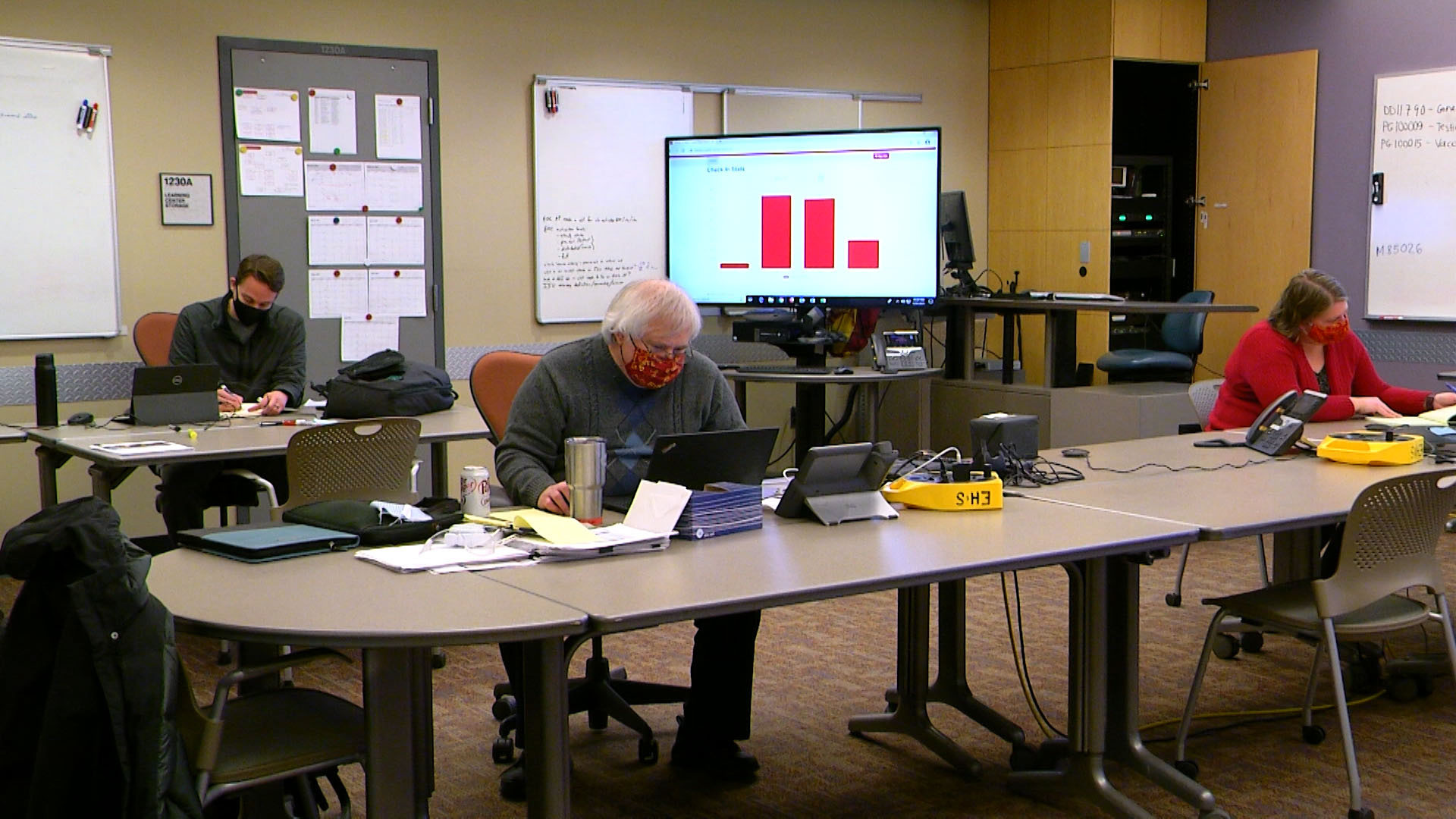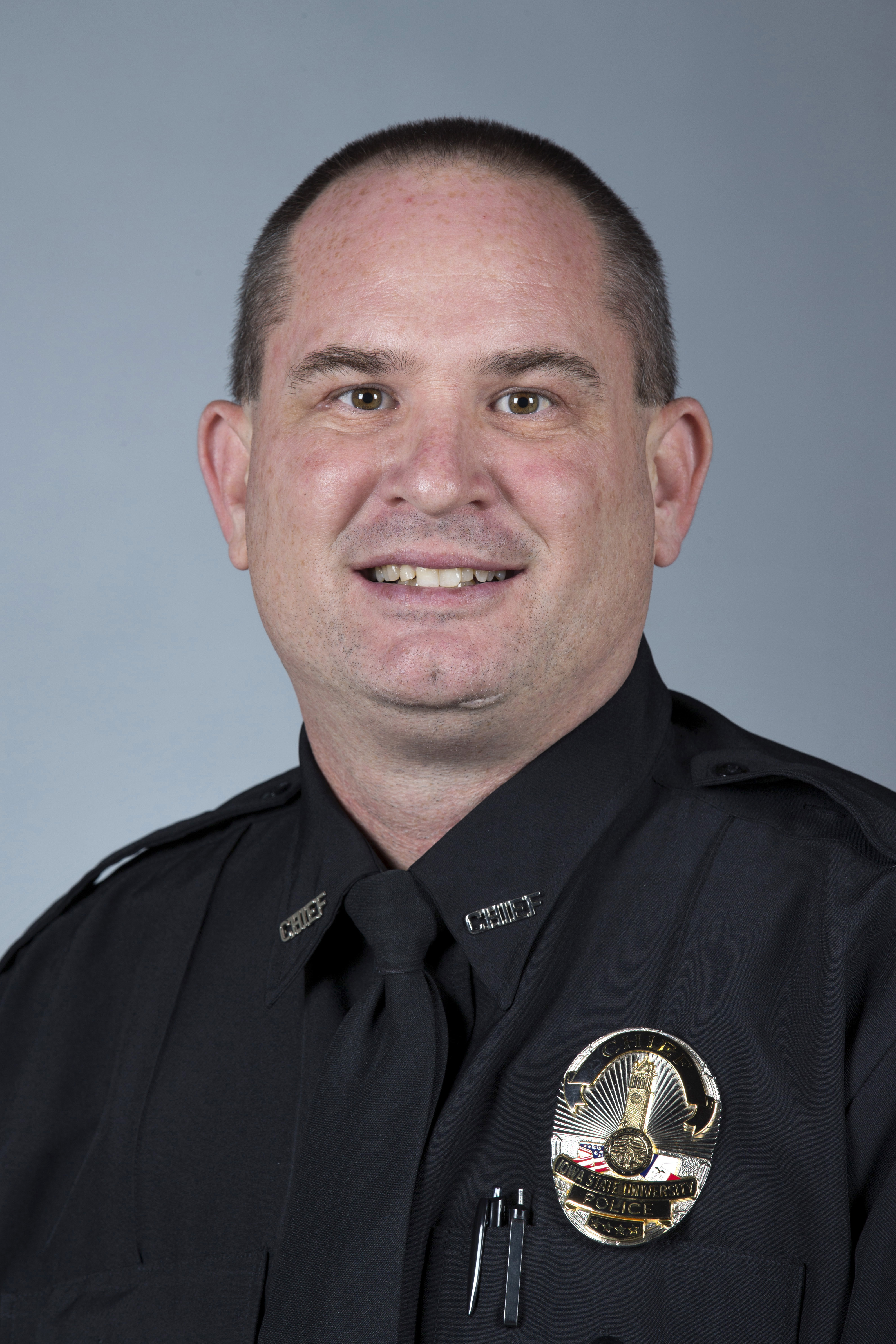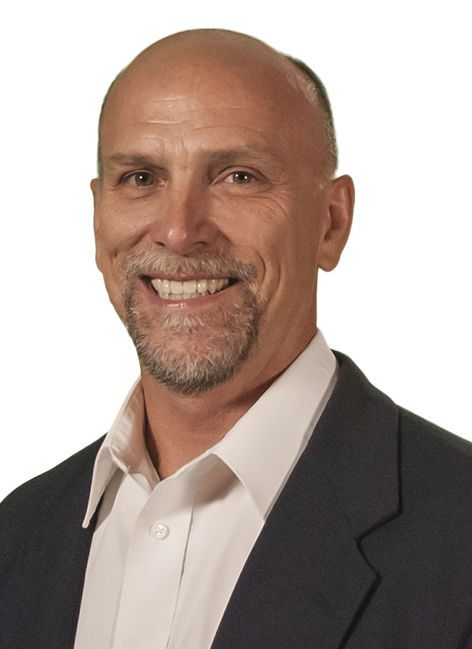
From left to right: Clayton Oliver, Rob Bowers and Amy Helgerson spend their days working behind the scenes in the Emergency Operation Center. Photo by Dave Olson
By Angie Hunt, News Service
AMES, Iowa – Inside the mind of Iowa State University Emergency Management Director Steve Simpson is a playbook of emergency scenarios that would make it difficult for many people to sleep at night.
It is Simpson’s job to always be thinking about, planning and preparing for everything from floods and tornadoes to H1N1 and other public health threats. But even he could not have imagined a year after activating Iowa State’s Emergency Operation Center (EOC) that the university would still be responding to COVID-19. Or that in the midst of the pandemic, a derecho would hit campus causing extensive power outages and temporarily disrupting a massive effort to test students moving into the residence halls.
Despite the many challenges over the past year, Simpson has maintained a positive outlook. He admits it hasn’t been easy and there have been bumps in the road, but having worked at Iowa State for nearly three decades, he’s seen time and again how the university community steps up when needed.
“There’s no way we could have made all this happen without the collaboration across our campus,” said Simpson, who pointed to the many working groups created to address everything from teaching and research to workforce protection and housing as examples. “The skills that everyone brings to the table are just incredible. When you bring those skills together, what can be accomplished in a day just blows my mind. We’re a blessed institution.”
Simpson says he and the EOC team – Amy Helgerson, Clayton Oliver and Rob Bowers – tend to work best behind the scenes, providing the structure and support for the working groups, the incident management team and senior leaders. The EOC team was instrumental in the planning and operation for move-in testing at Lied Recreation Center in the fall and developing the university’s return-to-work plan.
“Our job is to find resources, find answers to questions and bring it all together,” Simpson said. “And our role is to provide support – from the president to the custodians and all the jobs in between – and figure out how we can respond most effectively.”
That support extends beyond the campus borders. The unified command team – the combination of the EOC and incident management teams – continues to meet regularly, often on a weekly basis, with city and county leaders. Simpson says a coordinated response has been vital during the pandemic, especially because decisions made at the university level impact the Ames and Story County communities.
Unified effort requires unified command
As the EOC and several campus units monitored the spread of the virus in early 2020, it became clear that Iowa State would need to bring students and scholars back to the U.S. But the situation quickly escalated to needing to provide housing for returning students required to isolate, to moving classes online and having faculty and staff work remotely.
“I thought we’d get students back from study abroad and that would be it,” Iowa State Police Chief Michael Newton said.
Newton remembers convening a meeting in early March at the Memorial Union with senior leaders who were all attending ISCORE. The decision to move classes online came shortly after that meeting. Already having an established a collaborative command structure proved to be beneficial, said Newton who serves as a liaison between the unified command team and senior leaders.
“For months, we met every single day, sometimes even on Saturdays and Sundays,” Newton said. “The fact that our leaders are so engaged and ask for our input and feedback has really stood out to me.”
Newton knows from conversations with colleagues at other institutions this type of collaboration is not universal. He, much like Simpson and so many others involved in the response, value the relationships he’s built with members of the campus community whom he might not normally interact with on a regular basis. And now as a parent of an Iowa State student the efforts of everyone involved to promote health and safety are even more meaningful.
“I’ve always had a passion to make sure we’re doing the right thing and students are protected, but it changes when you have a student here,” Newton said. “I think a lot about all the things students have missed out on and how important it is for them to have these experiences on campus.”
Staying ahead of the curve
Predicting risks and anticipating needs is an inherent part of the emergency management process, which means balancing the immediate response with efforts to stay ahead of the curve. It has made the phrase “need to pivot” a popular part of the vocabulary for the EOC team as well as many others on campus.
The demand for personal protective equipment, especially during the first months of the pandemic, is a perfect example of the need to pivot. From N95s to face shields to cloth face coverings, Paul Richmond, director of Environmental Health and Safety at ISU, and the workforce protection working group had to quickly change course in response to revised guidance from the CDC. They have also worked diligently to weed out fake products and secure hand sanitizer and other items as supply chains tightened.
“It was intense. The house was on fire and we had to figure out what we were going to do,” Richmond said. “But this is what we do. We are in the business of health and safety, so it’s just a different flavor of addressing a hazard.”
Ready when needed
Addressing hazards and staying ahead of the curve during an ever-evolving pandemic has also meant developing contingency plans to meet critical needs only to have those needs change. Early on in the pandemic, ISU’s Biosafety Officer Betsy Matos and the biosafety team – Steven Ziegenfuss and Anne Dombroski – researched and tested techniques to decontaminate N95 respirators, which were in short supply.
The team collaborated with Mary Greeley Medical Center as well as the Laboratory Animal Resources unit on campus to acquire the necessary equipment and space to test the process to reuse N95s. It worked, but Matos says due to changes in the supply chain, they never had to use the decontamination process.
“Thankfully, we did not need to take this step, but we remain ready if there is ever a short supply and we need to switch on that process,” Matos said. “This is just one example of all these different parts that have occurred behind the scenes to make this response happen.”
Matos, Richmond and Simpson were all part of the university’s planning for H1N1 and say those efforts as well as the relationships established during that time – both on campus and in the community – have paid off over the past year. While much more was known about H1N1 than COVID-19, the structure and connections apply to both. Simpson says for the EOC team, and all the others working behind the scenes on campus, resilience and humility have also been essential qualities.
“I’m most proud of the resilience of the EOC team. It’s been a lot of pressure and we’ve had to learn to work together. The resilience of our team and the cooperation and collaboration of our team, which is really true across campus,” Simpson said. “And being humble enough to put your ego on the shelf. When you think about the mix of people working in this group and everyone’s voice is heard. We come together as a group and determine the best action to bring to senior leadership on a daily basis.”
Read the series
Learn more about ISU’s pandemic response in a collection of stories highlighting some of the hard work, dedication and collaboration across campus.



